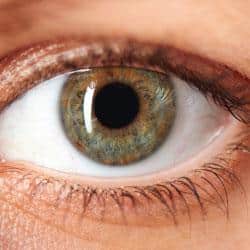
Increasingly, experts recommend that those with brown or black eyes should more carefully follow cataract prevention measures. That’s not to say eye color is the most significant factor in developing cataracts, far from it, but let’s explore how it is thought to change the risk.
Eye Color and Cataracts
Cataracts are the clouding of the eye lenses, a condition that occurs more often as people get older. Several studies indicate that the darker your irises, the more likely you are to develop several different types of cataracts. In a 2014 review for the International Journal of Ophthalmology, researchers discovered that darker eye color is associated with a greater risk of:
-
- Nuclear cataract (center of the lens)
- Cortical cataract (edges of the lens)
- Posterior subcapsular cataract (back of the lens
In two studies reviewed, people with darker eye color were significantly more likely to have a cataract in a follow-up four or five years after the initial assessment.
The idea that those with light eyes develop cataracts at a higher rate likely came about from the reality that people tend to look more at eyes that are bright, blue, or green. When those colors start to get clouded, more people notice it.
How Eye Color Affects Cataracts Risk
Scientists have not fully explained the association between darker eye color and the incidence of cataracts – and not all agree it’s a factor. But in the same 2014 review, the authors said they believe the increased quantity of melanin may make the difference. People with darker eye color have a higher level of melanin, the pigment that adds color to skin, eyes, and hair. Melanin in the iris absorbs more photon energy, which creates heat. The association of heat with the development of cataracts is well-known.
Ophthalmologists understand that people who spend a lot of time in the sun without protective eyewear or who have a profession around heat generation, such as welding, are more likely to get cataracts. Thus, experts suggest that the higher heat absorption in darker eyes may be the cause of cataracts.
This has been a difficult hypothesis to test, but scientists have found a similar positive correlation in rats. Researchers found that rats with more pigment in their eyes were also more likely to develop cataracts. This leads some experts to conclude that eye color and cataracts can be linked genetically. Eye color is genetic, and some research suggests that cataracts may also be.
Cataract Prevention Measures
All people should invest the time to care for their eyes, regardless of eye color. Cataracts are a common problem for adults in middle age and older, so prevention is key to minimizing the effects of this slow-forming condition.
The number of Americans with cataracts has been above 20 million for years now. People with certain risk factors, including darker eye color, should take greater precautions earlier in life. Since cataracts can take years to develop, starting sooner can reduce the likelihood of serious vision loss years from now.
All adults can do many things to minimize their risk for cataracts, including:
- Wear sunglasses in the daytime outdoors
- Put on a hat with at least a 3-inch brim
- Stop smoking or never start
- Get regular eye exams, particularly if you notice any vision concerns
If cataracts are already starting to accumulate in your eyes, you cannot stop them. You can slow the accumulation, but you must know that you have the condition. Visit your ophthalmologist at least once every two years for a comprehensive eye exam, especially after age 60. Early diagnosis can help you to protect your vision and make arrangements for treatment.
Laser Cataract Surgery Options
When your doctor determines that you need to have cataract surgery, you want to know that the surgery will be a success. Modern approaches to laser cataract surgery allow a surgeon to remove your cataracts and replace them with new lenses that often reduce dependence on glasses.
The doctors of Barnet Dulaney Perkins Eye Center were among the first doctors in the state of Arizona to use the LenSx femtosecond laser during cataract surgery; almost four years ago. Before the surgery, your surgeon discusses the options for advanced intraocular lens (IOL) replacement to best correct your vision. With this procedure, you may be able to use an IOL that corrects conditions such as presbyopia, an age-related vision problem that makes it harder to see items close up. Laser cataract surgery is a safe and effective procedure to dramatically improve eyesight after cataracts.
Eye Color is Just One Factor for Cataracts
Your eye color is now thought of as a genetic trait that affects your risk for developing cataracts. The darker your eyes, the more likely you will eventually get this common condition.
By protecting your eyes from sun and smoke and seeking eye care from a qualified ophthalmologist, you reduce your risk of vision problems related to cataracts. If you do develop cataracts, you can rely on the staff and surgeons of Barnet Dulaney Perkins Eye Center to use the best laser cataract surgery methods to remove your cataracts and restore your vision.


